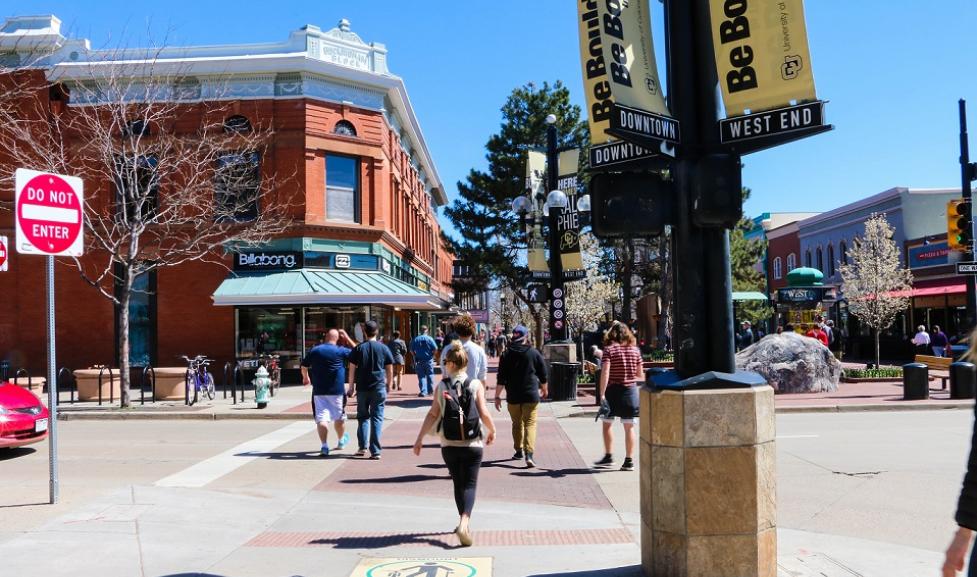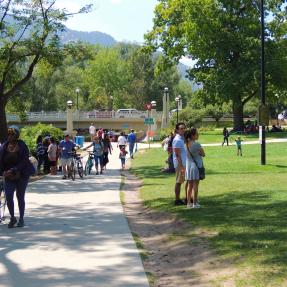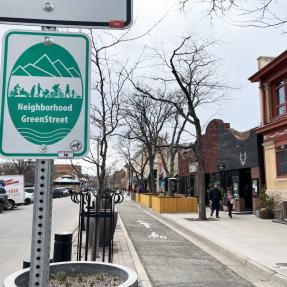In September 2019, the City Council voted to adopt the updates to the Pedestrian Plan.
Vision & Goals
Vision
Everyone enjoys being a pedestrian in Boulder for all types of trips — walking is easy, safe and well-connected.
Goals
To create a pedestrian network that is:
Safe and comfortable: Walking in Boulder is safe, secure and comfortable for everyone, in support of Boulder's Vision Zero goals.
Equitable and inclusive: Boulder is walkable and accessible for all, no matter who you are or where you live.
Vibrant and inviting: Public spaces and pedestrian facilities are vibrant and inviting, and walking is the preferred way to get around.
Healthy people and environment: Walking for transportation and recreation in Boulder is used to achieve improved health outcomes, social connectedness, and a sustainable and resilient environment.
Connected and barrier-free: Access to destinations and other modes ("walk extenders") is direct, efficient, barrier-free and integrates new technologies and innovations.
The vision and goals of the Pedestrian Plan were developed based on feedback from the community, the Pedestrian Advisory Committee (PAC) and the Transportation Advisory Board (TAB).
This is the first Pedestrian Plan update since the 1996 Pedestrian Policy Plan.
Boulder has changed a lot in 20 years—today, there are more people, places and ways to get around. The update provided an opportunity to understand existing conditions and potentially reassess ways to build out and maintain the desired network of facilities.
More specifically, the pedestrian plan update gave the city the opportunity to:
- Prioritize pedestrian travel as the primary mode throughout the community;
- Hold a comprehensive community conversation about the city’s pedestrian system;
- Include a vision for the future and specific policies and action items to achieve that vision;
- Examine how to integrate pedestrian facilities into transit and bicycling networks ;
- Incorporate ways to meet new Americans with Disability Act (ADA) requirements;
- Expand on the “15-minute” neighborhood concept;
- Integrate policy updates in alignment with the Transportation Master Plan and recently updated Boulder Valley Comprehensive Plan and Climate Mobilization Action Plan (CMAP)
- Take an in-depth look at tools to work toward a walk-friendly city, building on the five “Es”: Engineering, Encouragement, Education, Enforcement, and Evaluation.
Before 2019, the last update to the Transportation Master Plan was completed in 2014. That plan prioritized walking in several ways:
- Providing a continuous network so that pedestrians are not stranded short of their destination or forced into difficult or potentially dangerous situations;
- Ensuring a safe walking environment through adequate maintenance, snow removal, vegetation trimming and lighting;
- Creating a pedestrian-oriented environment through high-quality urban design and pedestrian amenities; and
- Providing routine education and enforcement on the rights and responsibilities of pedestrians, bicyclists and vehicle drivers.
Pedestrian Advisory Committee 2.0
The first Pedestrian Advisory Committee (PAC) was instrumental in the development of the City of Boulder’s new Pedestrian Plan. The city created the Pedestrian Advisory Committee 2.0, a committee of community members, to help put the plan into action.
PAC 2.0 supported the priority actions identified in the Pedestrian Plan. Specific duties included:
- Advance the goals of the Pedestrian Plan by helping prioritize next steps for program implementation.
- Provide feedback on project materials that will be presented to the Transportation Advisory Board and City Council.
- Provide advice on community outreach strategies.
- Share information with other community members.
The PAC 2.0 held its first meeting on January 23, 2020.
Meeting Dates and Packets
Pedestrian Advisory Committee (PAC)
The Pedestrian Advisory Committee (PAC) was made up of community members and examines issues related to being a pedestrian in Boulder. The PAC helped shape materials that will be presented to the Transportation Advisory Board (TAB) and City Council during the Pedestrian Plan update.
Meeting dates and packets (each packet contains a summary of the previous meeting as an attachment):
Other meeting materials:
Pedestrian Safety Webinar - Feb. 21, 2019


